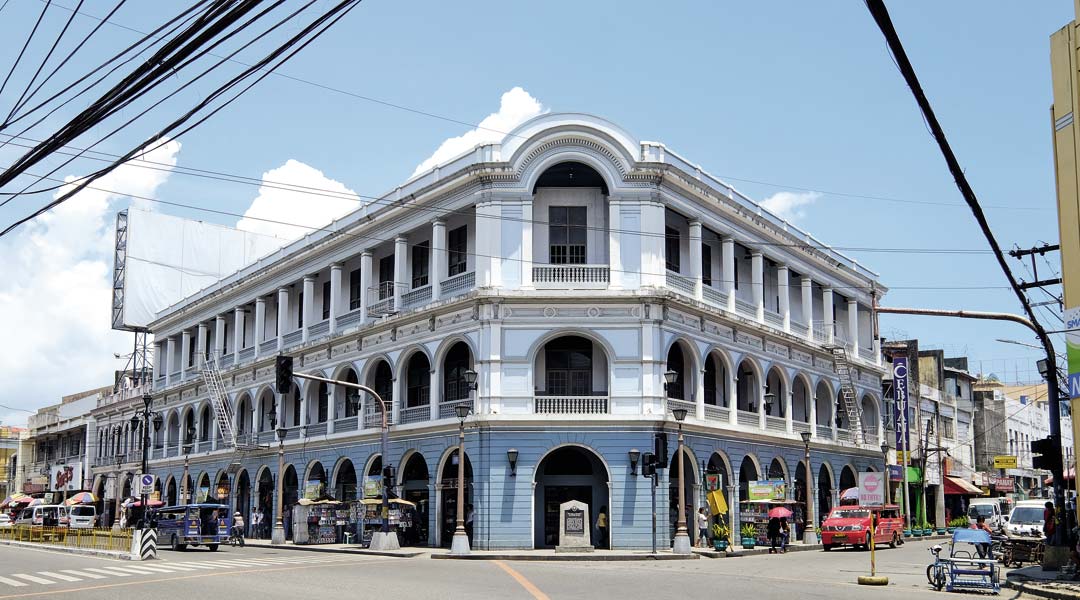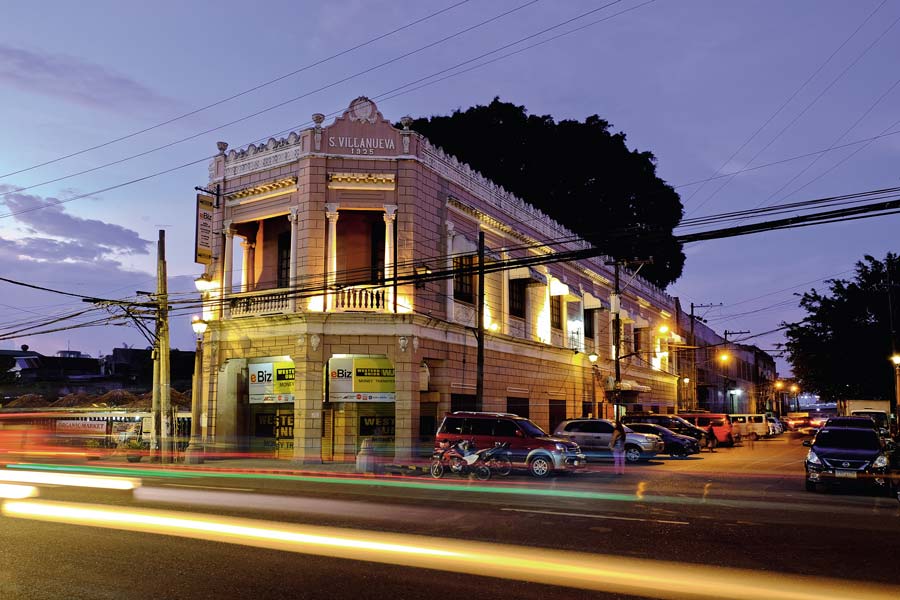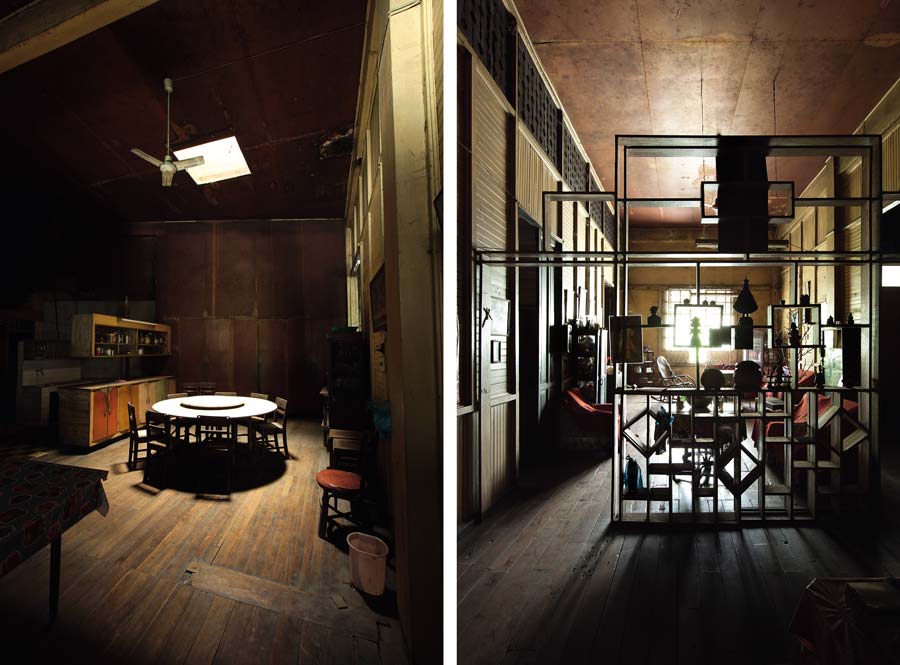
Iloilo’s Calle Réal shows Escolta how it’s done
There are only two heritage central business districts or CBDs in the Philippines: Escolta in Manila and Calle Réal (now J.M. Basa Street) in Iloilo City. Both have the best collection of period architecture (circa 1920-1940) in the country. There is no lack of care and concern from heritage conservation circles for either district. One may say the former has received much more attention, especially in the media, than the latter. Yet it is the less talked-about—and the one with the much smaller LGU budget—that is on the way to restoration, while year after year, Escolta irrevocably loses building after precious heritage building. Much of Calle Réal’s renewal is due to the indefatigable determination of local conservation groups to uphold the city’s roots and birthright.
Iloilo is blessed with a local government that, unlike Manila’s, recognizes the tourism, economic, cultural, and psychic value of safeguarding heritage structures; and puts its money where its mouth is by allowing the cost of restoration to be tax deductible!

According to ICHFI president Manny Villa and ardent restoration architect Antonio Sangrador, the foundation’s goals for the rejuvenation of Calle Réal include:
- Restoring 26 vintage building façades;
- Covering the sidewalks with pavers and installing old-style street lamps;
- Relocating Calle Réal’s sidewalk vendors to viable locations; and
- With the LGU’s support, ‘bundling,’ if not relocating electric and telephone cables. What follows are short stories of some of the buildings the ICHFI and its supporters have worked on.
Read more: Revitalizing Downtown Iloilo: The Push for City-wide Initiatives
S. Villanueva Building, 1925
Just five years ago, when the ICHFI first got together, their goals seemed like a foolish fantasy. They needed, as Villa and Sangrador wrote in the Journal of Philippine Local History and Heritage, “to demonstrate the foundation’s seriousness of purpose.” Their first conscript was Elnora Santos, who “fortunately decided to gamble on the preposterous offer of the ICHFI to restore the building at her own cost.”

Elnora first moved into the building in 1958 when she was 18 years old. Her 33-year old husband, the owner of Commoner Store just a few blocks away, had bought the building from Serafin Villanueva. The young family reserved five upstairs rooms for their use, and one of the downstairs units as a warehouse for the school supplies sold in their store. The rest of the spaces were rented out. All six Santos children grew up in the building, which Elnora and her kids say is enchanted and lucky. One of their favorite reminiscences is how small brown birds with long beaks would bring semiprecious stones called diamante negra—over a hundred such stones—to a potted pine tree up on the roof! Their father collected the stones, and they are still in the family vault today. When the ICHFI approached her in 2011 to have the old building fixed (the Santos family had long moved out by then), Elnora and her children readily agreed, since it represents some of the happiest years of their family life.

S. Villanueva Building, 1925
Because of Elnora Santos’ brave and big-hearted example, former Prime Minister Cesar Virata, then vice chair of RCBC’s board, readily agreed to restore the heritage building housing one of their branches in Iloilo City. It helped that the first building on Calle Réal to be restored was right across RCBC’s. Virata and the board rightly envisioned the two restored buildings, both two-storey and on corner lots facing each other, would make their junction in the historic CBD most striking.

E.R. Villanueva Building (International House) Building, 1927
Serafin Villanueva had this building constructed the same year as his other building across Arsenal Street. Its richly detailed Art Deco façade shows Villanueva and/or his architect (unfortunately unidentified) were not only in vogue but ahead of the curve. Although decorative artists continued rising in status and influence in Europe from the 1870s through the early 1900s, Art Deco only formally debuted as a style in 1925 at the world fair held in Paris, the Exposition Internationale des Arts Décoratifs et Industriels Modernes. Villanueva must have been a well-travelled man, willing to try out new trends, and one who valued modernity and luxury, attributes strongly associated with Art Deco.

Regent Arcade, 1928
The advent of cinematography during the 1920s to 1940s gave birth to a new building typology—cinema palaces. During the American period, these buildings competed with the churches as the new place of congregation. Cinema architecture used elaborate elements and gimmickry to capture the public’s fantasy and draw in crowds of moviegoers. Inside, people were transported into an imaginary realm and provided a few minutes of escape from the drudgery of real life. The Regent Arcade was one such building. Formerly known as the Palace Theater or Cine Palace, the neo-classical building is characterized by its Corinthian arcade, fluted columns, and an ornate pediment with floral and female figures.

With the arrival of television and the subsequent rise of multiplexes and malls in urban centers, the allure of cinema theaters like the Regent Arcade lost its grip on the public imagination. In time, it degenerated into a place of ill-repute that showed pornographic films. Thankfully, with the façade restoration of the only remaining standalone theater in Iloilo City, the Regent Arcade has also cleaned up its act and is now being rented out to a popular fast-food restaurant and other businesses. The hallway on the ground floor and the upper floors remain shabby. But the hope is as more people buy into the revitalization of Calle Réal, the skindeep improvements on many of the buildings will spread to their interiors.
READ MORE: Manila Cathedral undergoes a comprehensive restoration
Javellana Building, 1922
Inspired by the example of Mario Jalandoni who shared the cost of restoring the International Hotel, five more sets of building owners followed suit. Among these were the owners of the Javellana building. Their initial reluctance was justified—a fire in the 1980s had gutted the building, leaving only a hollow concrete shell. It was an eyesore, its blackened façade, and gaping, soulless windows, a sad metaphor for the fate of Calle Réal. But because of its prime location and the shell was still serviceable, the owners eventually had the façade painted, and the windows and doors replaced so they might still be able to lease space, which they were able to, to Sarabia Optical. When faced with the prospect of spending again on the façade, the desire to revive the beauty of the Old Calle Réal won out and they agreed to share the expense with ICHFI despite no certainty of return on investment. The tax incentives, of course, were a major factor in their decision. Since the restoration of the façade, there still has only been one tenant, the loyal Sarabia Optical.

The case of the Javellana Building raises the fascinating question of what constitutes a heritage building deserving of care. The damage from the fire was so acute little of what we see today is original. Few people would see value in saving a shell as the building owners and ICHFI have, and the result contributes a great deal to the sense of place and history of Calle Réal. We hope their idealistic and patriotic example moves the hearts, excites the imagination, and pricks the conscience of heritage building owners, conservation groups, and local governments across the country. ![]()
This story first appeared in BluPrint Special Issue 3, 2016. Edits were made for Bluprint online.
Photographed by Ed Simon and Mark Jacob


